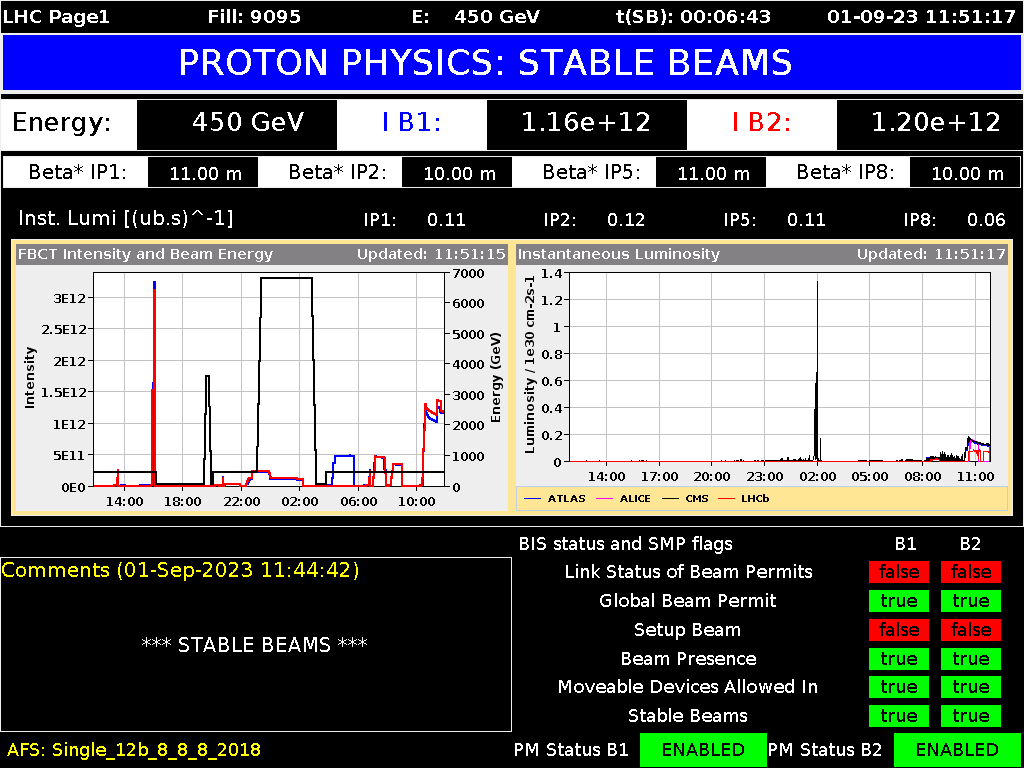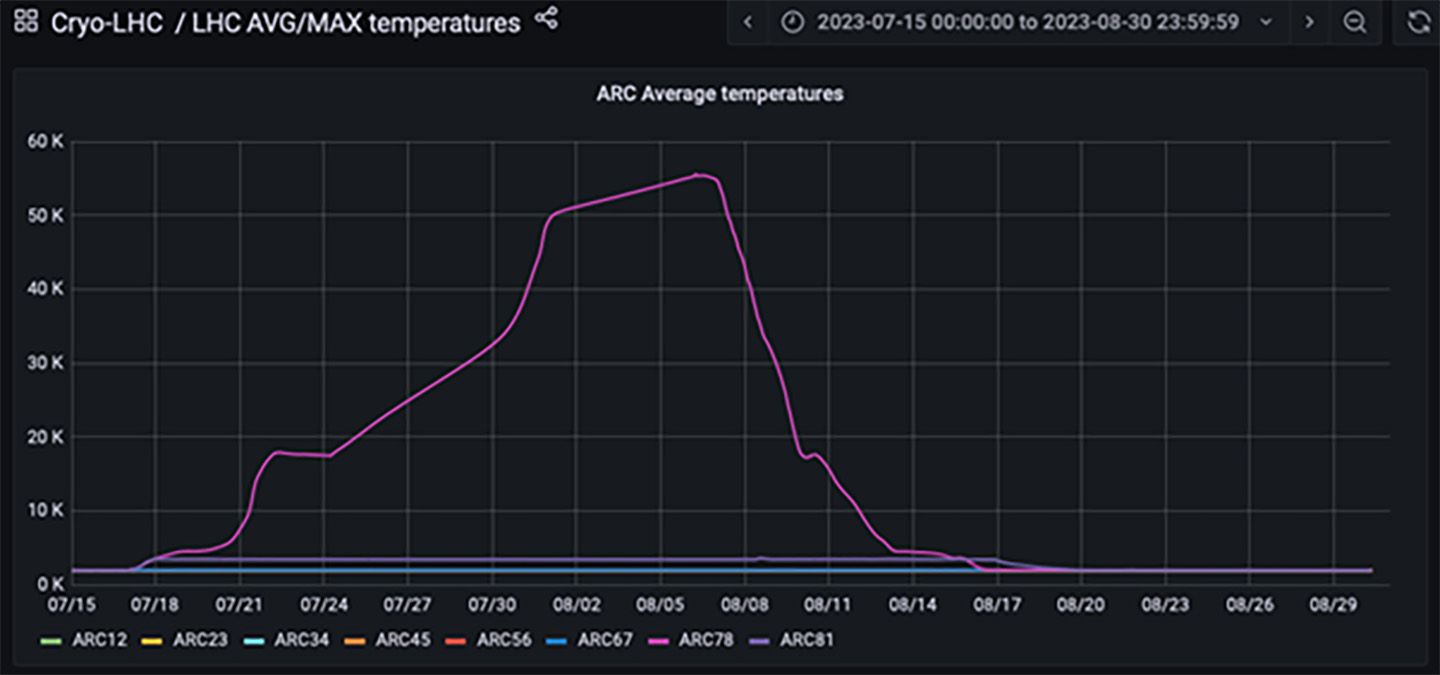
On 30 August, beams were once again injected into the Large Hadron Collider (LHC), slightly ahead of the revised schedule. A few days will now be required to recommission the machine with the beam, to revalidate the machine's safety systems, and to fine-tune all the machine parameters to ensure it's ready to deliver beams for physics research once more.
Following the repair of the inner triplet vacuum leak on 1 August, the LHC completed its cooldown on 22 August. This allowed for powering tests, a sequence of predefined assessments of the LHC equipment to revalidate their readiness for regular operation. Usually, magnet quench training is part of the powering test following a warm-up and cooldown cycle. However, on this occasion, when the nominal cycle was executed and a current of up to 11 600 A flowed through the dipole magnets, none of them experienced a quench. This outcome wasn't entirely unexpected, given that most of the machine was kept cold, and the temperature of the arc 7-8 remained below 80 Kelvin. This temperature threshold is crucial, as it marks the point beyond which the alteration in mechanical stresses within the magnets becomes significant.

The LHC schedule has been revised following discussions between representatives of the LHC experiments and the LHC machine teams. We concluded that the emergence of the leak should mark the end of regular proton running this year, as reinstating high proton-beam intensity operation at 6.8 TeV would entail substantial setup and revalidation time. Consequently, the focus for the rest of the year will be on the heavy ion physics that was already scheduled for the year-end. This will be complemented by relatively brief special physics runs with protons, such as Van de Meer scans to calibrate the luminosity measurements of the experiments and proton collisions with strongly de-focused beams at the interaction points (high beta star) in the experiments, along with a condensed machine-development session, which were initially planned for the second half of July.
The heavy-ion programme, starting in the week of 11 September, comprises two parts. The first is a proton–proton reference run at an energy of 2.68 TeV, followed by the actual run with lead ion collisions in all four large LHC experiments. Originally scheduled for four weeks, this lead ion run has now been extended by an additional week. The last lead ion beams of 2023 will then be dumped on Monday 30 October at 6 a.m. marking the start of winter stop for the entire CERN accelerator complex. Until then, anticipation is high for a busy, challenging and above all a successful physics period.
The resumption of beam operation is not only rewarding for the physics community, but also for all the dedicated people who have worked hard and thought out-of-the-box to get the unprecedented vacuum leak repaired. By avoiding the standard procedures of warming up the whole sector, the repair was made quickly and now enables the lead ion run to take place. This accomplishment underscores the strength, quality and innovative spirit of CERN's scientific and technical teams.
